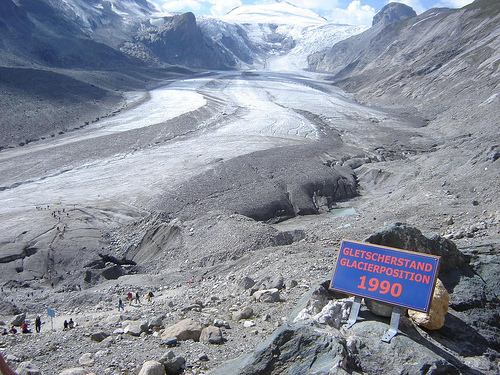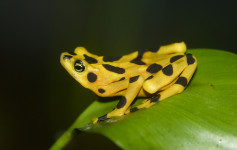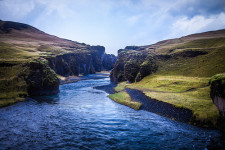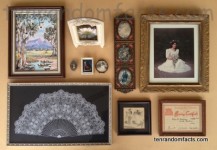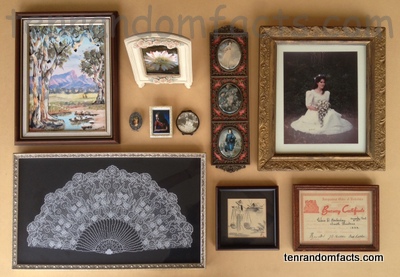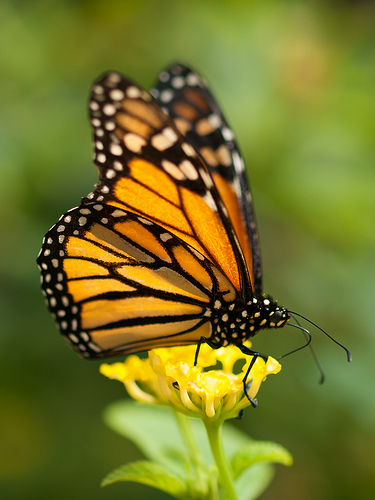
Something is frightening the Pasterze Glacier – its retreating quite quickly!
- Pasterze Glacier is a glacier located in the Eastern Alps in the Hohe Tauern National Park, in Austria, Europe.
- ‘Pasterze’ of ‘Pasterze Glacier’ comes from the word ‘Pastirica’, which is translatable from Slovenian as ‘shepherdess’, and the glacier is also known as ‘Gletscherweg Pasterze’ and ‘Pasterzengletscher’.
- Pasterze Glacier spreads a length of roughly 8.4 kilometres (5.2 miles), and is Austria’s and the Eastern Alps’ longest glacier.
- Pasterze Glacier starts at the Johannisberg mountain that has a peak 3,463 metres (11,361 feet) high, and ends at approximately a height of 2,100 metres (6,890 feet) above sea level.
- Austria’s Grossglockner, the highest mountain in the country at 3798 metres (12,460 feet) high, towers directly over Pasterze Glacier.
Pasterze Glacier
Image courtesy of Nathan Wong/Flickr
- Annually, Pasterze Glacier retreats on average more than 10 metres (33 feet), although from 1982 to 2008, it was more than 18 metres (59 feet) per year.
- Measurements of Pasterze Glacier were first obtained in 1851, however, since then the glacier has lost over half of its volume.
- The water that melts from Pasterze Glacier feeds into the Mӧll River, some of which is used for hydroelectric power plants.
- Although decreasingly rapidly, the thickness of Pasterze Glacier is approximately 120 metres (394 feet).
- The Grossglockner High Alpine Road is typically used to visit Pasterze Glacier, while a cable railway, known as a ‘funicular’ and a walking trail are usually utilised to access the glacier.
Bibliography:
Bayr K & Hall D, The Recessions of the Pasterze Glacier, Austria, as seen on Maps, Satellite Imagery, and Measured in situ from 1864 to 2008, 2009, Eastern Snow, http://www.easternsnow.org/proceedings/2009/bayr_hall.pdf
Pasterze Glacier, 2015, Wikipedia, https://en.wikipedia.org/wiki/Pasterze_Glacier
Pasterze Glacier Trail – Tracking the Ice Age, 2015, Carinthia, http://www.nationalpark-hohetauern.at/en/Articles/View/369





